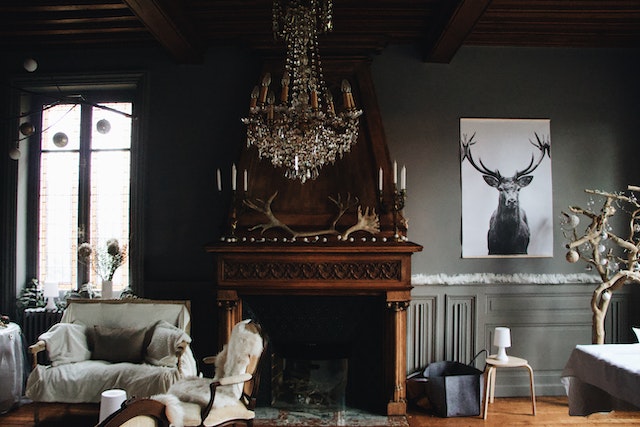Back to Blogs
The Essential Guide to Chimney Firebacks: History, Function, and Benefits
September 12, 2023

If you own a fireplace or have spent time around one during the cold winter months, you may have noticed a metal plate or panel situated at the back of the hearth. This unassuming yet vital component is known as a chimney fireback. In this article, we’ll delve into the history, function, and benefits of chimney firebacks, shedding light on their role in both practicality and aesthetics.
A Brief History
Chimney firebacks have a long and storied history, dating back to the 15th century in Europe. Initially made of cast iron, these firebacks were designed to address several concerns that arose when using open-hearth fireplaces. The primary issues included heat loss, structural damage due to intense heat, and soot accumulation. Over the centuries, chimney firebacks evolved both in terms of materials and design.
Functionality
1. Heat Reflection: One of the primary functions of a chimney fireback is to reflect heat back into the room. By positioning a fireback at the rear of the fireplace, it captures and radiates heat that would otherwise be absorbed by the fireplace masonry. This not only improves the efficiency of your fireplace but also ensures that more heat is distributed throughout the room, making it more comfortable.
2. Structural Protection: Firebacks serve as a shield for the back wall of the fireplace. The intense heat generated by the fire can cause damage to the masonry over time, leading to cracks and deterioration. A fireback acts as a barrier, protecting the fireplace structure and increasing its longevity.
3. Aesthetic Enhancement: In addition to their practical benefits, chimney firebacks are often adorned with intricate designs, patterns, and inscriptions. These decorative elements add a touch of elegance and personality to your fireplace, making it a focal point in your home.
Benefits of Using a Chimney Fireback
1. Improved Heat Efficiency: By reflecting heat into the room, chimney firebacks can make your fireplace significantly more efficient. This means you can enjoy a warmer and cozier living space while burning less fuel, which is both environmentally friendly and cost-effective.
2. Preservation of Fireplace Structure: Over time, the repeated heating and cooling of the fireplace masonry can lead to structural damage. A fireback provides a layer of protection, extending the life of your fireplace and reducing maintenance costs.
3. Aesthetic Appeal: The decorative aspect of chimney firebacks allows homeowners to personalize their fireplaces. Whether you prefer classic motifs, historical scenes, or custom designs, you can find a fireback that complements your interior decor and adds a unique touch to your living space.
Installation and Maintenance
Installing a chimney fireback is relatively straightforward. It is typically placed at the back of the fireplace and can be secured using fireproof adhesive or mortar. It’s essential to ensure that the fireback fits snugly within the fireplace to maximize its efficiency.
Maintenance is minimal. Occasional cleaning to remove soot and debris is all that’s required. However, you should inspect your fireback regularly to check for any signs of damage or wear.
Conclusion
Chimney firebacks are not only functional but also serve as a charming addition to any fireplace. Their history, dating back centuries, speaks to their enduring usefulness and appeal. By enhancing heat efficiency, protecting your fireplace’s structure, and adding a touch of elegance, chimney firebacks offer a range of benefits that make them a valuable investment for any homeowner who enjoys the warmth and ambiance of a traditional fireplace. So, if you’re looking to enhance your fireplace’s performance and aesthetics, consider adding a chimney fireback to your hearth.
